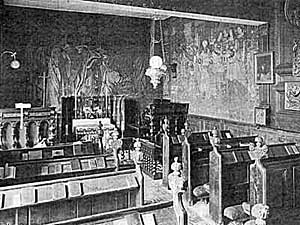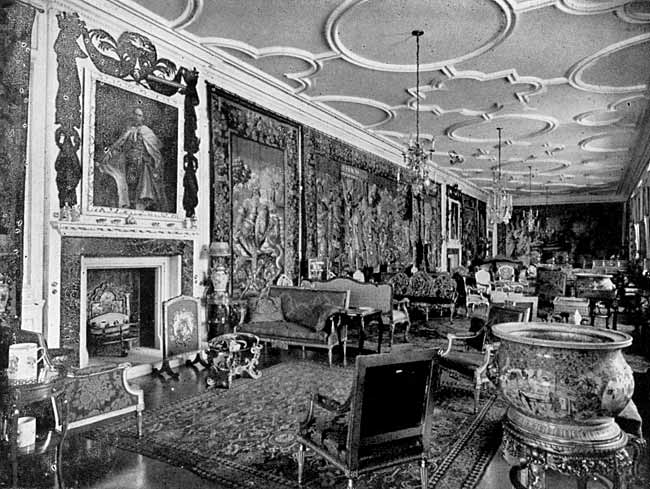This earl of Shrewsbury was officially connected with several other religious houses and no doubt was well informed about the disposal of them when they were about to be dissolved. Thus began the connection of the great house of Talbot with the former abbey; it continued till Sir George Savile, later Marquis of Halifax, married Mary daughter of George Talbot, 6th Earl of Shrewsbury in 1590 and became owner of Rufford, his descendants continuing to live there until 1938 when the house and land were nearly all sold. The sixth earl married Elizabeth Hardwick, on 9 February 1568, daughter of John Hardwick of Hardwick, Derbyshire, by whom he had no issue. He was her fourth husband and she his second wife. When she married Shrewsbury he was the richest and most powerful peer of his time. The first baron Savile was the right honourable Sir John Savile born in 1818. He was ambassador to Italy and had also held other appointments in the diplomatic service. He assumed the name and arms of Savile on succeeding to the Rufford estates and was created Baron Savile of Rufford in 1888. He died unmarried in 1898. His brother the Reverend Frederick Savile Lumley left a son John who became the second baron as the title passed to the nephew. George Halifax Lumley Savile, the third baron Savile was born in 1919 and succeeded his father in 1931.
When the Thoroton Society of Nottinghamshire visited Rufford in 1898 the members were shown over the abbey by Lord Savile and saw the valuable paintings, furniture, tapestry and other treasures. In the drawing room there was some fine Gobelin and Beauvais tapestry of the Louis XV period.

The Chapel, c.1900.
The chapel had no doubt a long and interesting history, although few records of it now remain. The date of its erection is unknown. Records exist of two marriages celebrated in it. In 1574 Charles Stuart Earl of Lennox married Elizabeth Cavendish and their daughter was the ill-fated Arabella Stuart. This Earl was a brother of Henry Stuart Earl of Darnley second husband of Mary Queen of Scots and their only child was James VI of Scotland who also became James I of England. In 1752 Richard fourth Earl of Scarborough was married in the chapel to Barbara second daughter of Sir George Savile.
Particulars about the acreage and sizes of some of the main rooms in the abbey were given when the house and most of its contents were offered for sale just over sixteen years ago. The estate covered approximately twenty-nine square miles and in addition to the ancient Liberty of Rufford it included the parishes of Bilsthorpe, Eakring and most of Ollerton, Ompton, Boughton, Wellow, and extended into Blidworth, Edwinstowe, Egmanton, Farnsfield, Kirton, Tuxford and Walesby. A synopsis of the accommodation of the abbey showed that there were the Brick Hall and Minstrel Gallery, 4 Reception Rooms, Billiards Room, two main Staircases, 3 Boudoirs, 18 Principal Bedrooms and 10 Dressing Rooms including Eleven Suites, 13 Bathrooms, 16 Servants' Bedrooms, Chapel, Crypt, Five Lodges, Stables and Garages, Cottages, Lake of 25 acres, 3 Hard Tennis Courts, Park lands and Home Farm. The hall known as the Brick Hall derives its name from the fact that a brick floor covered most of it; this hall was 59 feet by 30 feet 6 inches. It was panelled with oak wainscot to a height of 9 feet 3 inches. The area of the estate was:—
| Abbey and Park | 587.272 | acres |
| Farms | 12,259.878 | " |
| Woodlands | 2,339.623 | " |
| Forest Land leased to Forestry | ||
| Commission | 2,191.555 | " |
| Various other lands | 1,351.095 | " |
| TOTAL . . | 18,729.423 | " |

The Long Gallery, c.1938.
